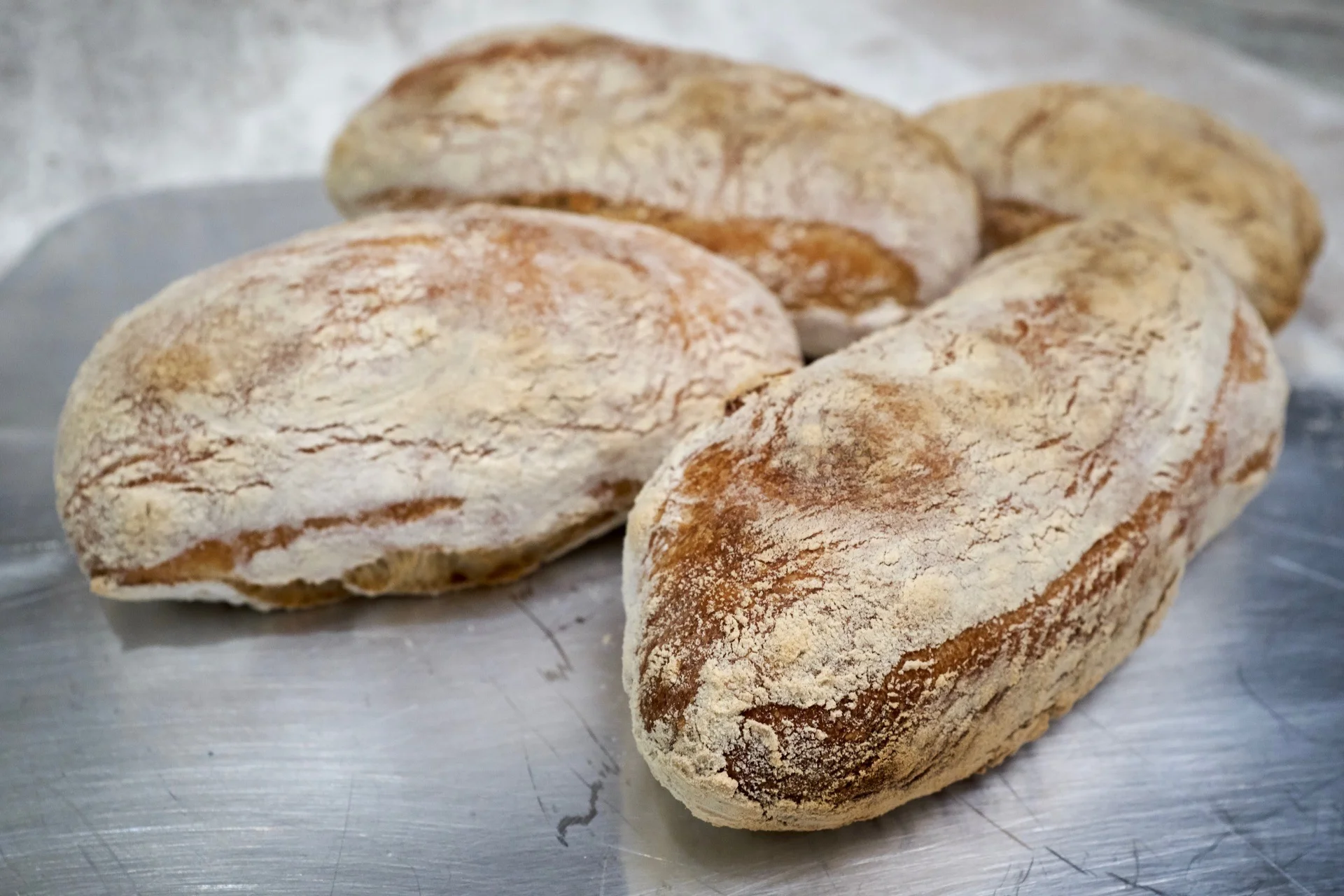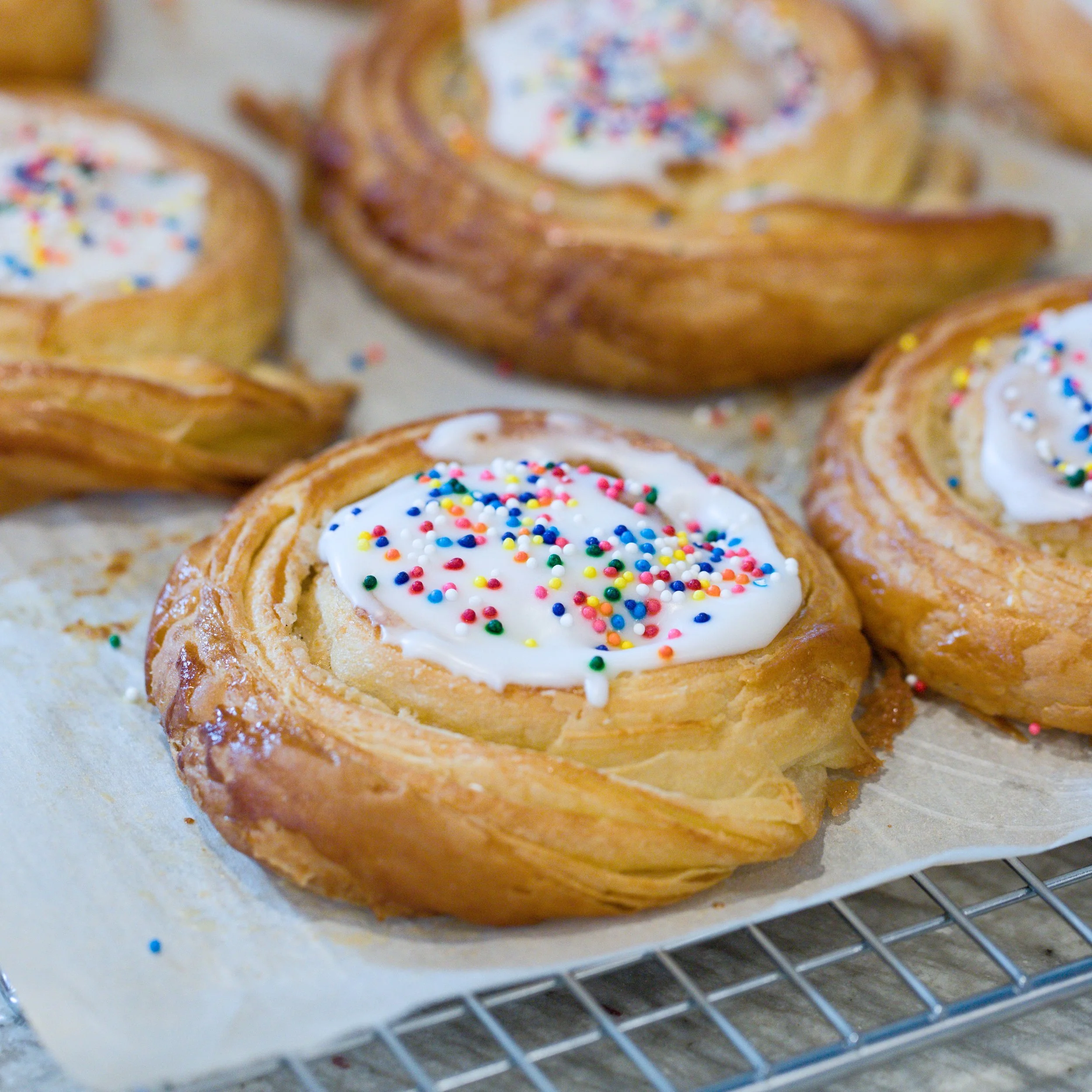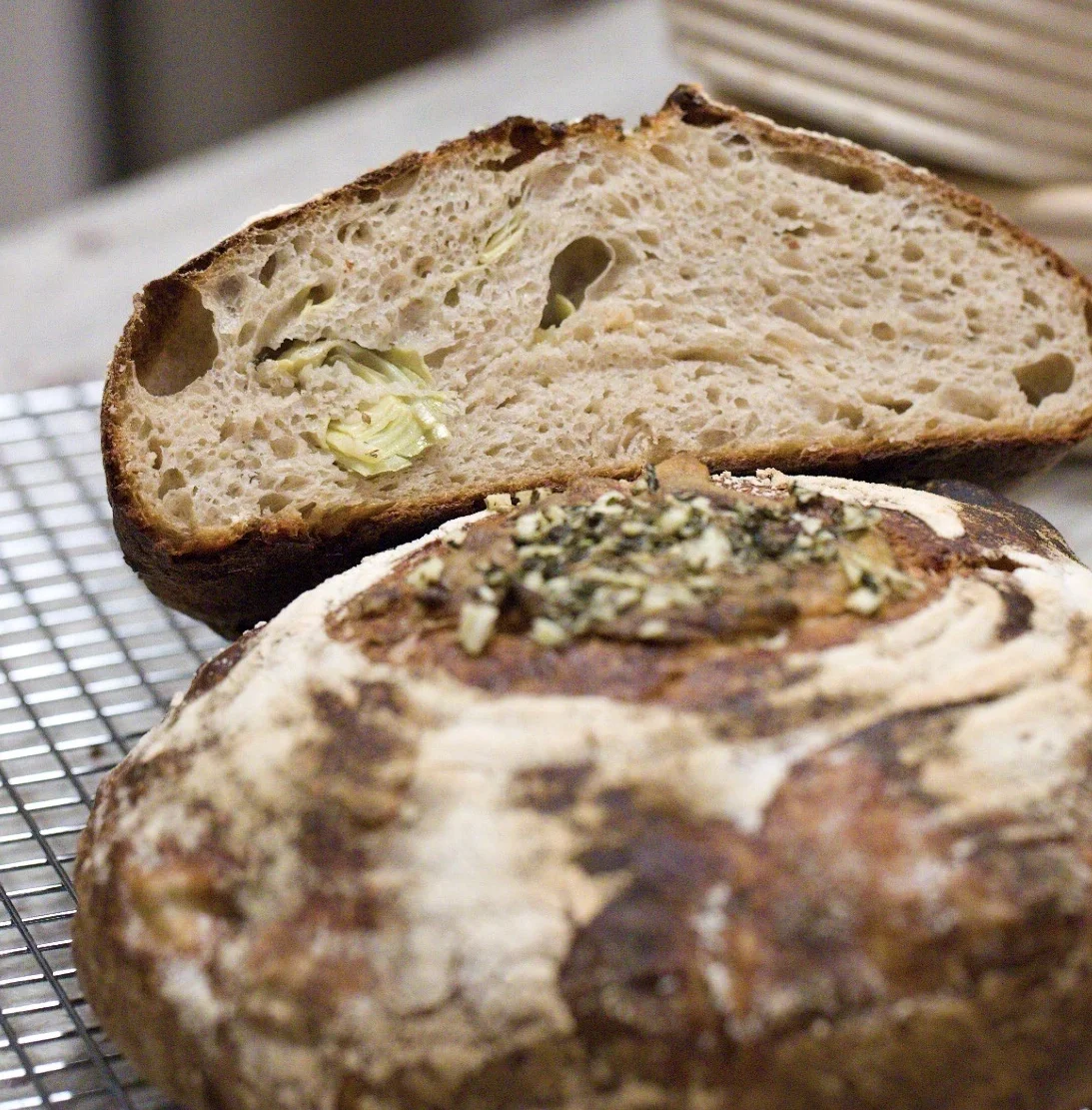In Denmark you can bye rye bread with chocolate, and I've seen a lot of sweet chocolate breads with dried fruits. But until I stumbled across this bread from Chocolate & Zucchini, I had no intention off making a chocolate bread. I liked the idea of an unsweetened sourdough bread with small chunks of good dark chocolate.
This bread is perfect for an afternoon snack, with a thin layer of cream cheese and sliced strawberries on top. It tastes a bit like a piece of cake, but not as sweet, you may even say that it’s healthy, since chocolate is considered a vegetable by some.
Ingredients:
Leaven:
- 1 dl sourdough starter (the leaven you saved in the refrigerator, from last time you baked)
- 2 dl water
- 1 dl whole wheat flour
- 1 dl all-purpose flour
Bread:
- 200 g leaven
- 525 g bread flour (high in protein)
- 50 g dutch processed cocoa powder
- ½ teaspoon dry yeast
- 425 g water
- 2 teaspoons salt
- 125 g dark chocolate, Valrhona, chopped
Directions:
Leaven:
Feed the starter to make the leaven. The leaven is ready to use when the leaven is bubbling and smells like beer - after about 8 hours at room temperature. Cover the bowl with the leaven with plate or a clean towel.
Save about 200 g leaven and put it aside in a sealed container. This will be your sourdough starter for the next batch of bread. It will keep without feeding for about 14 days in the refrigerator.
Feeding it is like making the leaven. Just pour out the liquid on top of the starter, and discard all but 1 dl of the starter. Mix in flour and water, and leave it on the kitchen counter for about 8 hours, until it's nice and bubbly. Now it will keep for another 14 days in the refrigerator before feeding.
Dough:
In the large bowl for you stand mixer, combine water, leaven and yeast with flour and cocoa powder. Mix for about 3-5 minutes, and then set to rest for 20-30 minutes.
Mix in salt and chocolate. Let the dough start fermentation at room temperature for about an hour.
Cover the bowl with plastic wrap, and place it in the refrigerator for 8-12 hours.
Take the dough out of the refrigerator and pour it onto the floured kitchen counter. Cover it with a clean kitchen towel, and let it get to room temperature, 2-3 hours. Make two rounds, and let them rise for another hour.
Folding:
Fold the third of the dough closest to you up and over the middle third of the round. Stretch out the dough horizontally to your right and fold this right third over the center. Stretch the dough to your left and fold this third over the previous fold. You are now starting to get a neat package. Stretch out the third of the dough farthest from you and fold this flap toward you, while rolling the whole package away from you, that the smooth underside of the loaf now is on the top and all the seams are on the bottom. Let the shaped loaf rest on the counter for a minute. Fold the other loaf the same way.
Let the dough rest in baskets generously dusted with rice flour. Using the dough scraper, transfer each round to a basket, smooth side down, with seam centered and facing up. Let rest at room temperature (75℉ to 80℉), covered with towels for 3 to 4 hours before baking.
Baking the Bread:
Twenty minutes before you are ready to bake the bread, pre-heat oven and dutch/french oven to 500 degrees, with rack in lowest position.
Flip one bread into heated dutch/french oven. Score top twice using a razor blade matfer lame. Cover with lid. Return to oven, and reduce oven temperature to 430℉. Bake for 20 minutes.
Carefully remove lid and continue to bake another 15-20 minutes.
Transfer loaf to a wire rack. It will feel light and sound hollow when tapped. Let cool.
Enjoy!
Adapted from chocolate&zucchini.
The danish version:
Chokoladebrød bagt på surdej
Ingredienser:
Surdej:
- 1 dl surdej (den surdej du har haft i køleskabet siden du bagte sidst)
- 2 dl vand
- 1 dl grahams mel
- 1 dl hvedemel
Brød:
- 200 g surdej
- 525 g hvedemel (gerne med højr proteinindhold)
- 50 g kakaopulver (Valrhona)
- ½ tsk tørær eller 5 g alm. gær
- 425 g vand
- 2 tsk salt
- 125 g mørk chokolade, Valrhona, groft hakket
Fremgangsmåde:
Surdej:
For at kunne bruge surdejen til bagning, skal du fodre den. Jeg plejer at tage ca. 1 dl "gammel" surdej og blande den med 2 dl vand, 1 dl hvedemel og 1 dl grahamsmel, og så røre det godt sammen. Lad den nye surdej stå tildækket på køkkenbordet i ca. 8 timer, indtil den bobler lystigt og dufter af øl. Herefter tager du det fra du skal bruge til bagningen og kommer resten i køleskabet i et syltetøjsglas eller lignende. Nu kan surdejen holde sig 14 dage i køleskabet, inden du skal fodre den igen.
Dejen:
Kom vand, surdej, mel, gær og kakao i skålen til din røremaskine og ælt dejen sammen i ca. 3- 5 minutter. Lad derefter dejen hvile i 20-30 minutter før du går videre.
Bland salt og chokolade i, og start hævningen ved stuetemperatur den første times tid. Dæk skålen til med plastisk film og kom den i køleskabet i 8-12 timer.
Tag dejen op og hæld den ud på et meldækket bord og dæk den til med et rent viskestykke. Lad dejen ligge og komme op til stuetemperatur i ca 2-3 timer. Del herefter dejen i 2 kugler og lad dem hæve yderligere 1 time.
Foldning:
Fold den trediedel der er tættest på dig hen over midten af dejen. Stræk dejen ud til siderne og fold siderne indover midten på dejen en ad gangen. Til sidst tages den del længest væk fra dig og foldes godt ind over de andre foldninger, men du spænder dejen op, så den bliver glat. Gør det samme med den anden dejklump.
Drys rismel (eller hvedemel) i hævekurvene og læg dejen i med samlingen øverst, og lad brødene hæve ved satue temperatur i 3-4 timer.
Bagning:
Omkring 20 minutter før du skal bage brødene, forvarm ovnen med en støbejernsgryde (med låg) til 260℃.
Vend brødet ud i den varme støbejernsgryde, snit i toppen af brødet med et barberblad og læg låget på. Kom gryden tilbage i ovnen og skru temperaturen ned til 220℃. Bag brødet under låg i ca. 20 minutter.
Fjern låget og bag videre i 15-20 minutter, indtil brødet er færdigt, og lyder hult, når du banker på bunden af det.
Afkøl brødet helt før du serverer det.
Velbekomme!
This post has been submitted to the Yeast Spotting Site.













